Hey NavigationTraders!
Welcome to another trading lesson from NavigationTrading.
In this tutorial, I want to discuss how to simulate short stock using options. There are a lot of stocks that you can just short outright, but there are also several reasons why you may want to use options to short the stock instead of just using stock outright.
Before I jump into that, I want to go over a couple things in relation to shorting stock. Then, we’ll jump onto the platform and go over some actual examples.
What Is Shorting or Short Selling?
When a trader borrows shares and immediately sells them, with the intent to profit by buying them back at a lower price.
Traditionally, when you buy stock, you want to buy low and sell high.
When you’re shorting stock, it’s just the opposite. You want to sell high and buy it back lower.
You can just think of short = sell, and long = buy. If you buy stock, it’s the same as being long stock. If you sell stock, that’s the same as being short stock.
One thing I hear a lot, is that “short selling is riskier than buying stock”. The regulators and others say that because, theoretically, a stock can only drop to zero. If you buy one share for $100 of a stock, the most you can lose is $100.
Theoretically, a stock can go up forever. If you short a stock at $100, theoretically, it could go to $1,000 and keep going. That’s why they say that shorting is riskier than buying a stock.
The reality of trading is that stocks don’t go up forever. There are a lot of things you can do to minimize that risk. You shouldn’t be scared of shorting stock. It’s no different from a risk reward standpoint than buying stock in general.
Good to Know
Shorting stock outright can only be done in a margin account. I don’t know of any brokers that allow you to short stock in an IRA. If you are planning to short a stock, you do want to have a margin account.
Let’s take a look at the thinkorswim trading platform.
There are acronyms at the top of your brokerage platform, classifying symbols into categories. Let’s review them.
There’s Easy to Borrow (ETB), Hard to Borrow (HTB), and None to Borrow (NTB).
Here’s a ticker symbol (BHP) that has stock that is None to Borrow. You’ll see “NTB”, up at the top of the platform, and that stands for None to Borrow. That just means is this stock is not shortable. There are no outstanding shares for you to borrow to be able to short this stock, so you wouldn’t be able to.
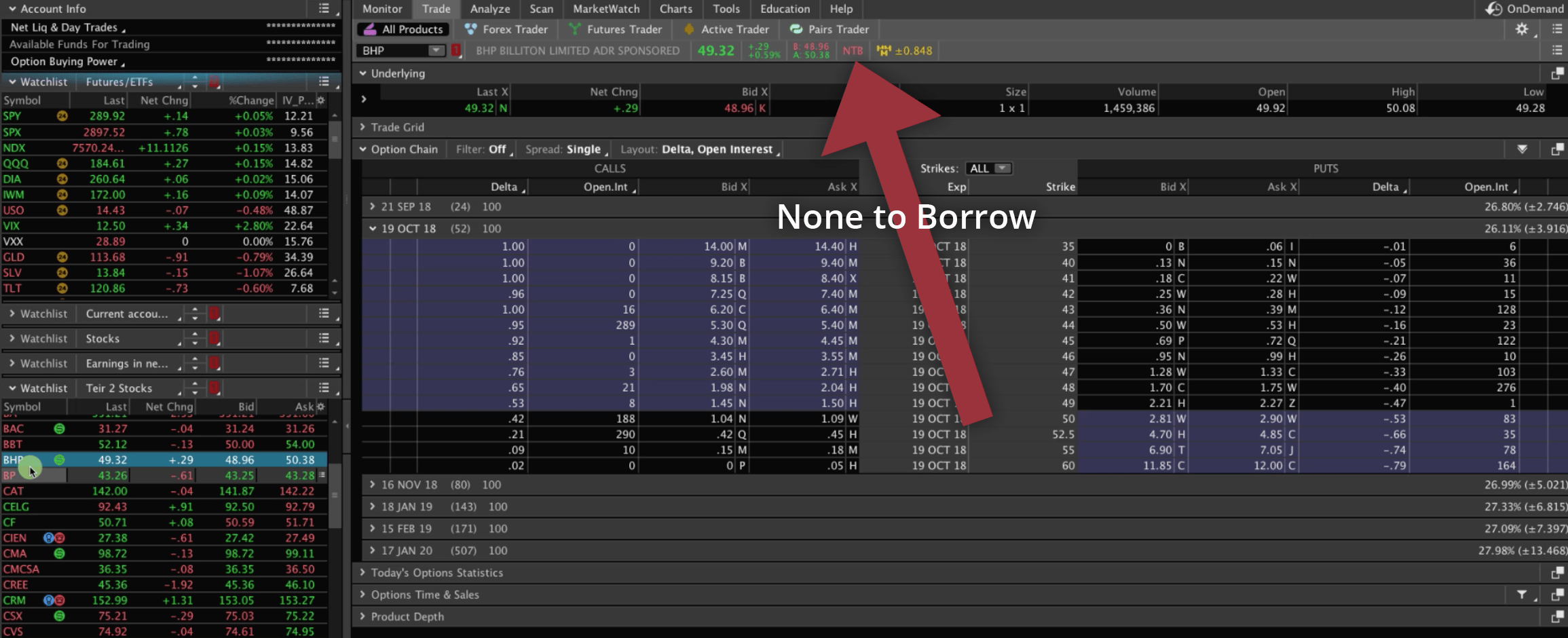
Let’s take a look at another example in DDD, the 3D Systems Corporation. What you’ll see, up at the top, is that it says, “HTB”, which is Hard to Borrow. What that means, is that there are not shares readily available for you to borrow and short by clicking and selling the shares You would actually have to contact your broker. They would have to locate a certain number of shares for you, to allow you to short the stock.
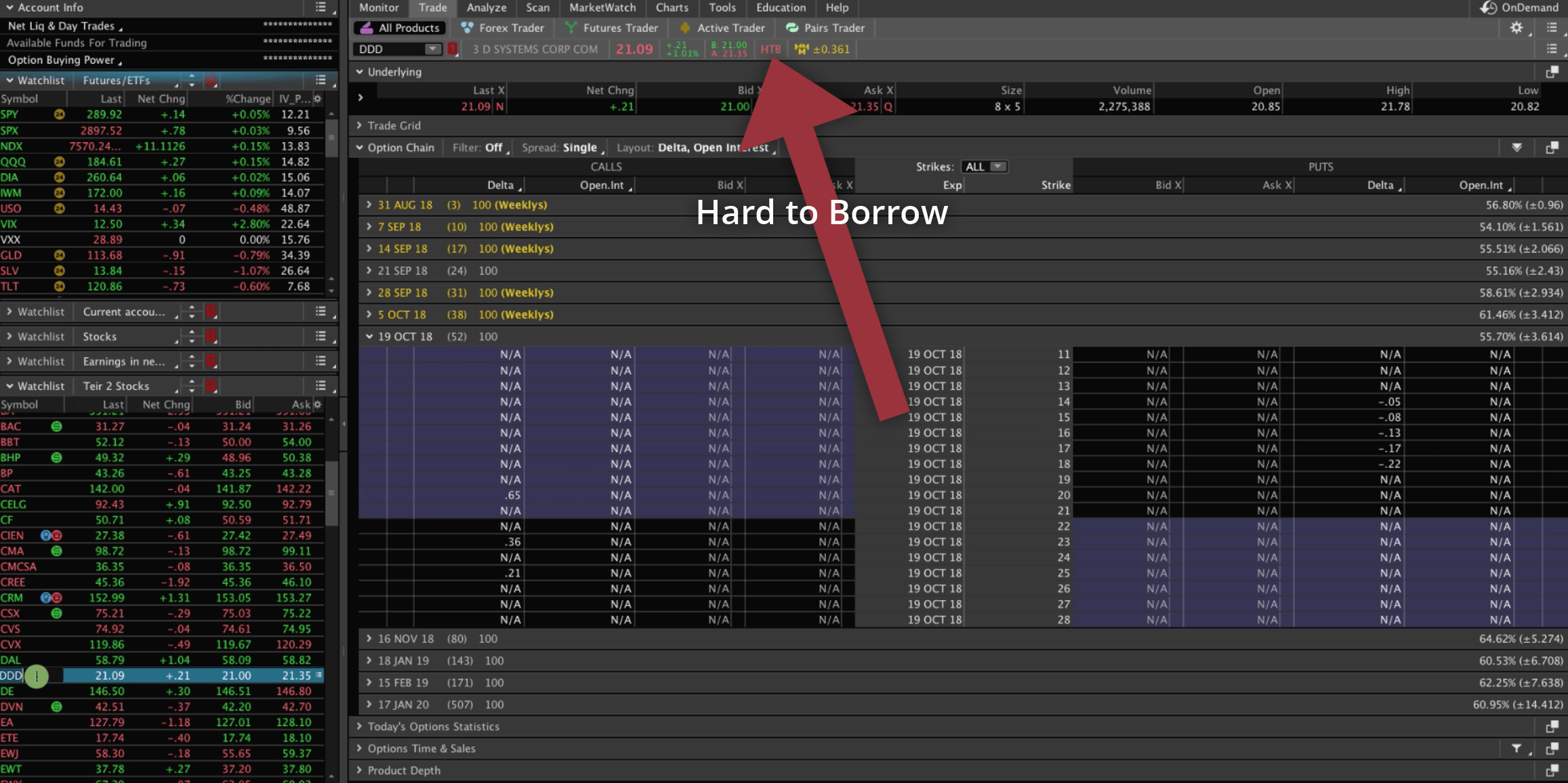
Lastly, let’s take a look at a more popular stock, a more highly traded stock, like Facebook, for example. You’ll see the acronym “ETB”, or Easy to Borrow. That means that shares are readily available to short.
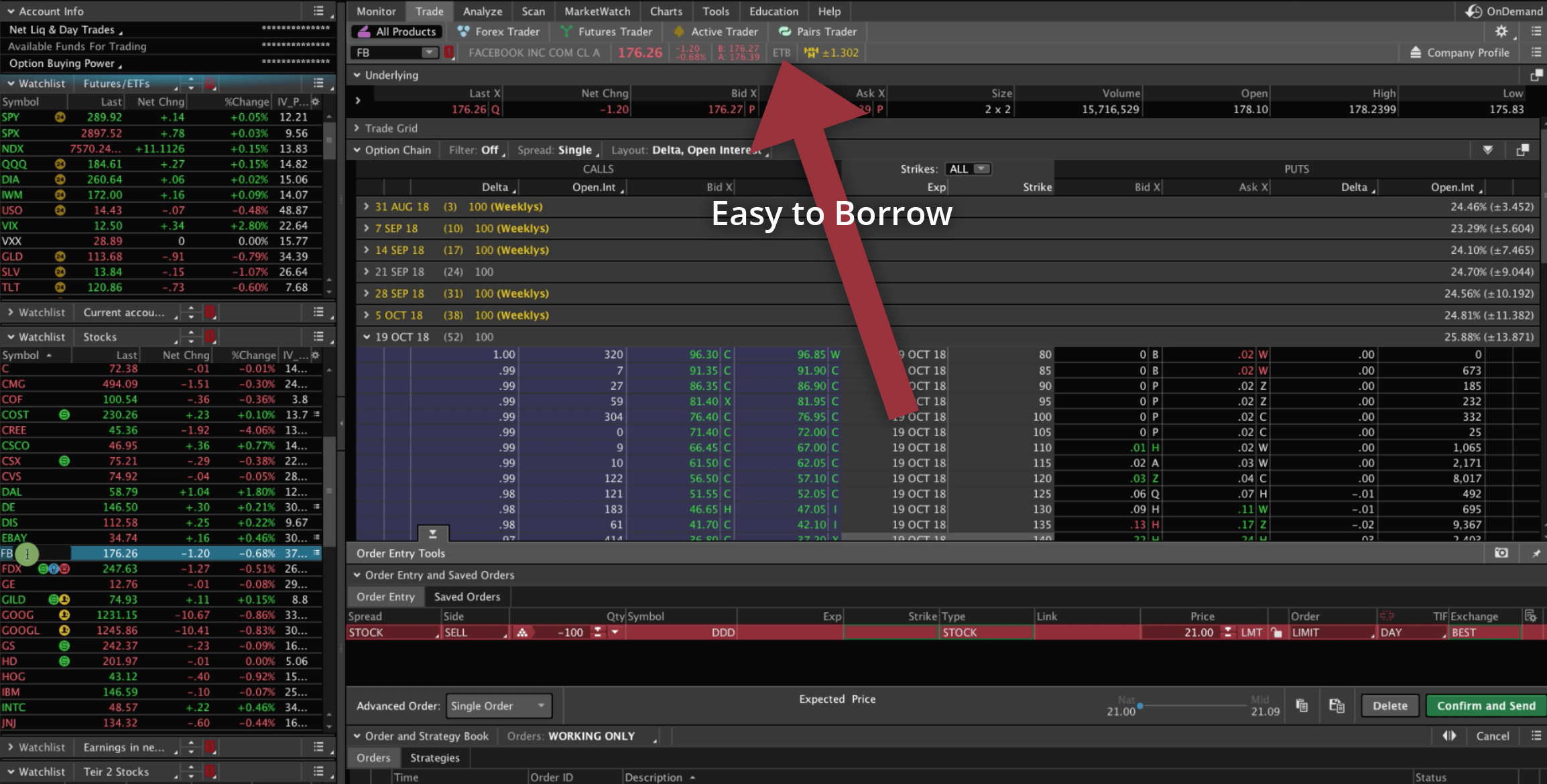
If you want to short Facebook stock, you could sell as many shares as you wanted, hit “confirm and send”, just as if you were buying a stock except in the opposite direction.
Have an IRA Account?
Let’s say that you wanted to short a stock, but you had an IRA account. Remember what I said about there not being any brokers, that I am aware of, that allow you to short stock in your IRA.
If we took a look at Facebook, for example, and you wanted to get short this stock, what options to you have?
Let’s analyze FB stock. This is a short stock position. Look at the profit line in the graphic below. If the stock is going down, that’s when you’re making profit. If it’s going up, that’s when you’re losing profits.

Let’s take a look at what we can do to simulate shorting stock using options. We’re looking at the options with 52 days to expiration. We typically put on positions with 30-60 days left, so that fits right into our wheelhouse.
Facebook is currently trading at about $176, so let’s use the closest strike at 175.
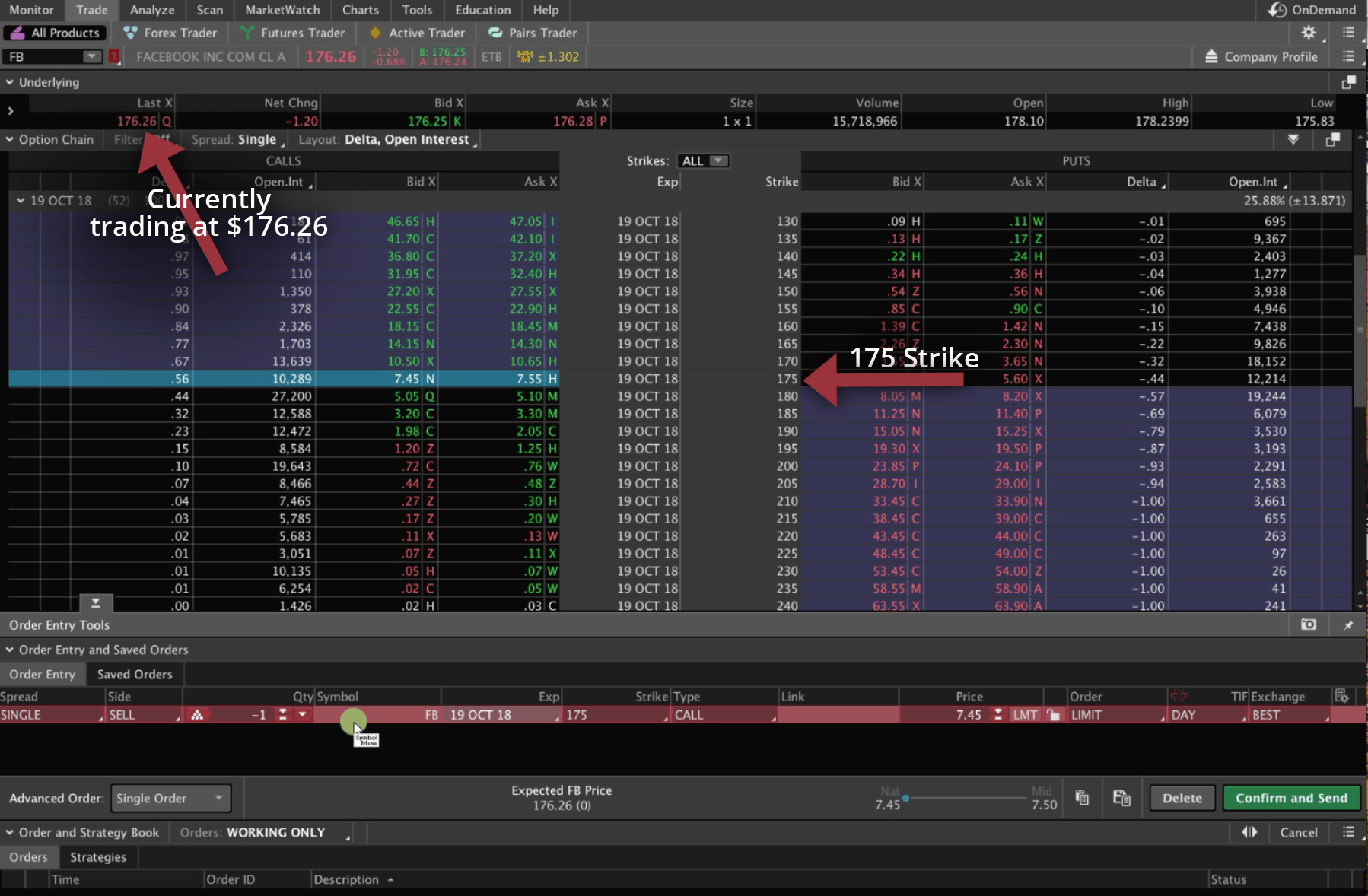
We just sell the Call. Then, we take that over to the Analyze tab.
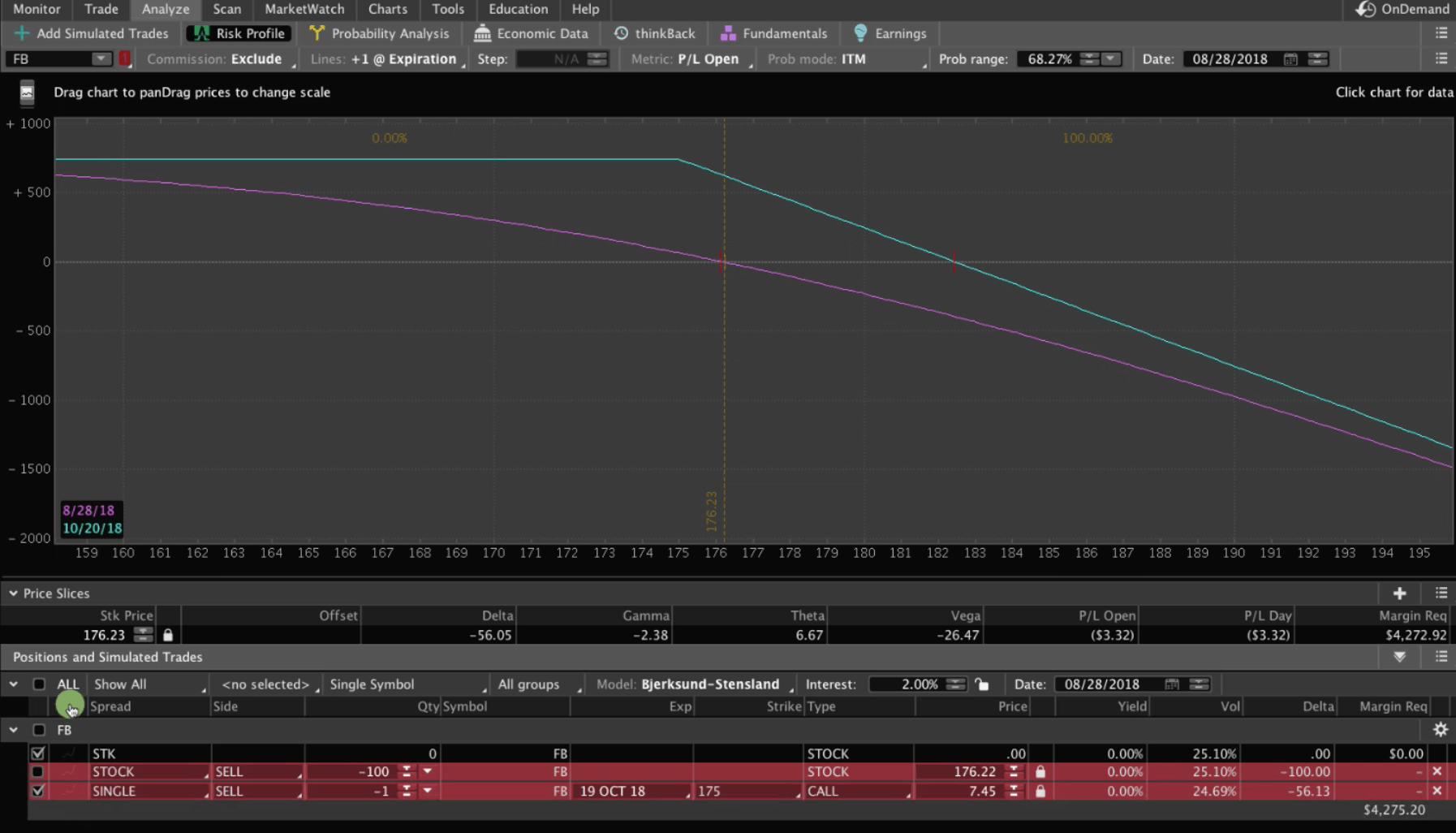
Then, we come back to the Trade tab and we buy a Put at the very same strike.

We go to the Analyze tab again. What you’re seeing below is that we are selling a Call at the 175 strike, and we are buying a Put at the 175 strike. Look at what your P&L graph looks like. Almost identical to that of shorting stock. If the stock goes down in price, you’re making money. If the stock goes up in price, you are losing money.
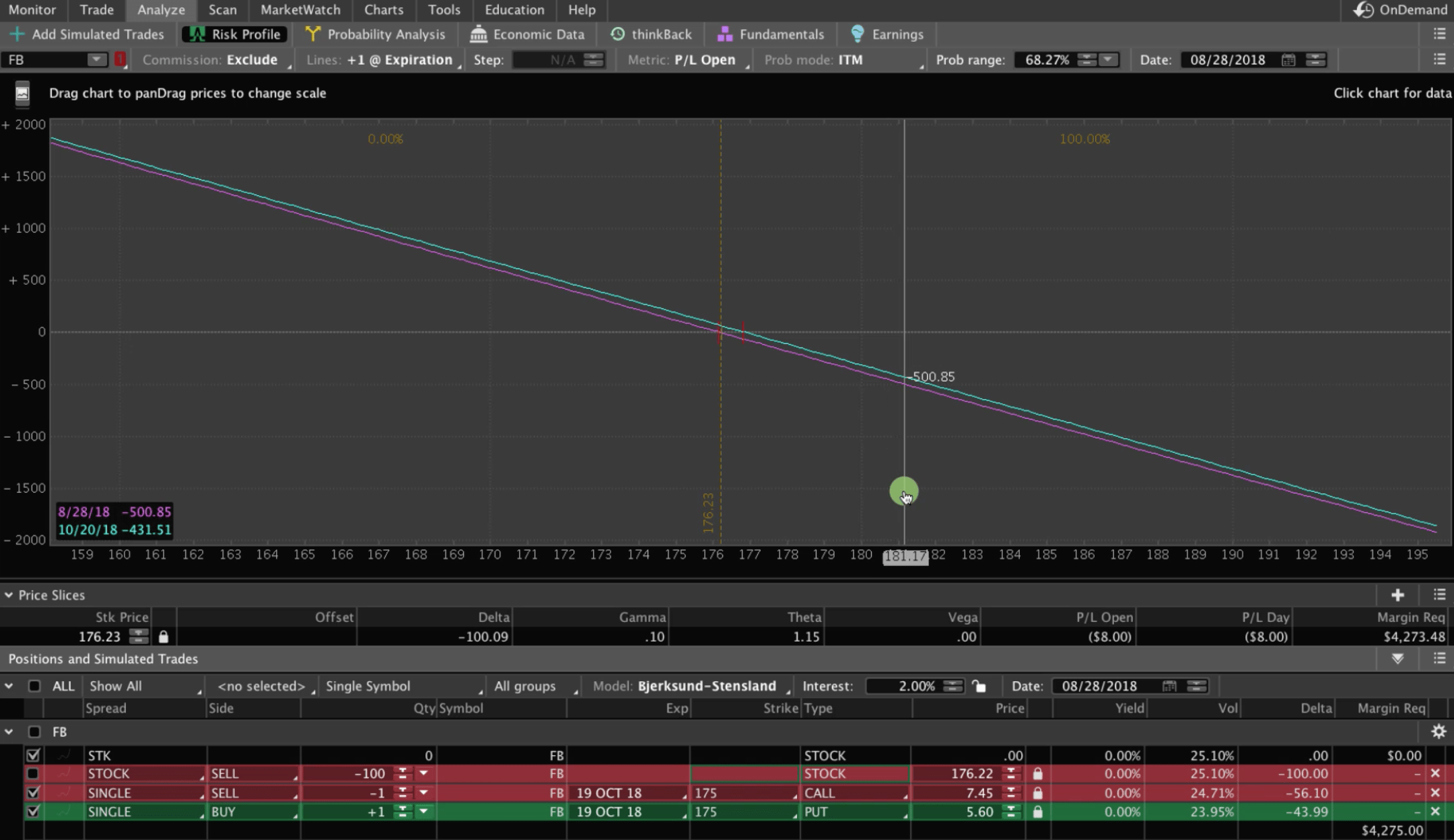
The other benefit to using options versus stock is that it’s going to cost you about 30-40% less in buying capital.
Go ahead and hit “Confirm and Send” on that Short Stock piece.
If you’re going to short 100 shares of Facebook, it’s going to cost you almost $7,600 in buying power. If you buy and sell the options, like I’m showing you in this tutorial, it’s going to cost you a fraction of that amount. You’re using leverage of the options to use less capital.

As I mentioned before, you cannot short stock in an IRA, so you might want to use options for that reason.
There are a variety of other reasons that options are a bit more flexible to trade with than individual stock, which is beyond the scope of this lesson. There are a lot of different things you can do with options that you just can’t do with stocks outright, to increase your probability of success.
So, Facebook was an example of shorting a stock that is Easy to Borrow. If you’re not in an IRA, it would be just as easy to short the stock or use the options. It’s more of a preference and an efficiency use of capital decision.
Going back to the stock that we looked at that is None to Borrow, BHP. You can’t even borrow shares, so shorting the stock outright isn’t even an option. If you did want to get short this symbol, what you would have to do is use options like we did with the Facebook example.
You can see the price is trading right about $49. You just sell the Call.
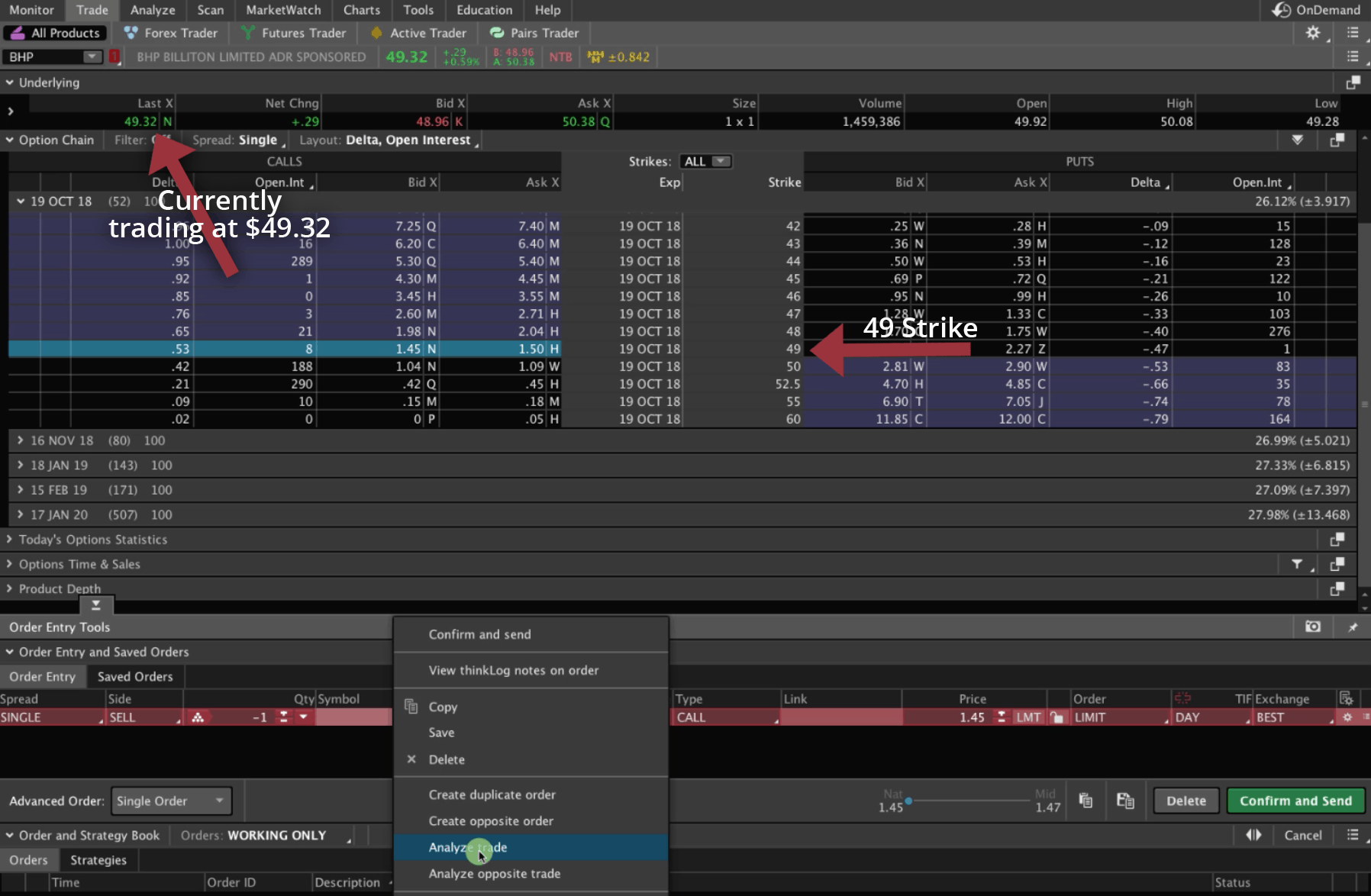
We’ll take that over the Analyze tab.

We’ll go back to the Trade tab, and we will buy the Put of the exact same strike.

Once you’re back on the Analyze tab, you’ll see you’ve got a very close simulation of selling stock short using options.
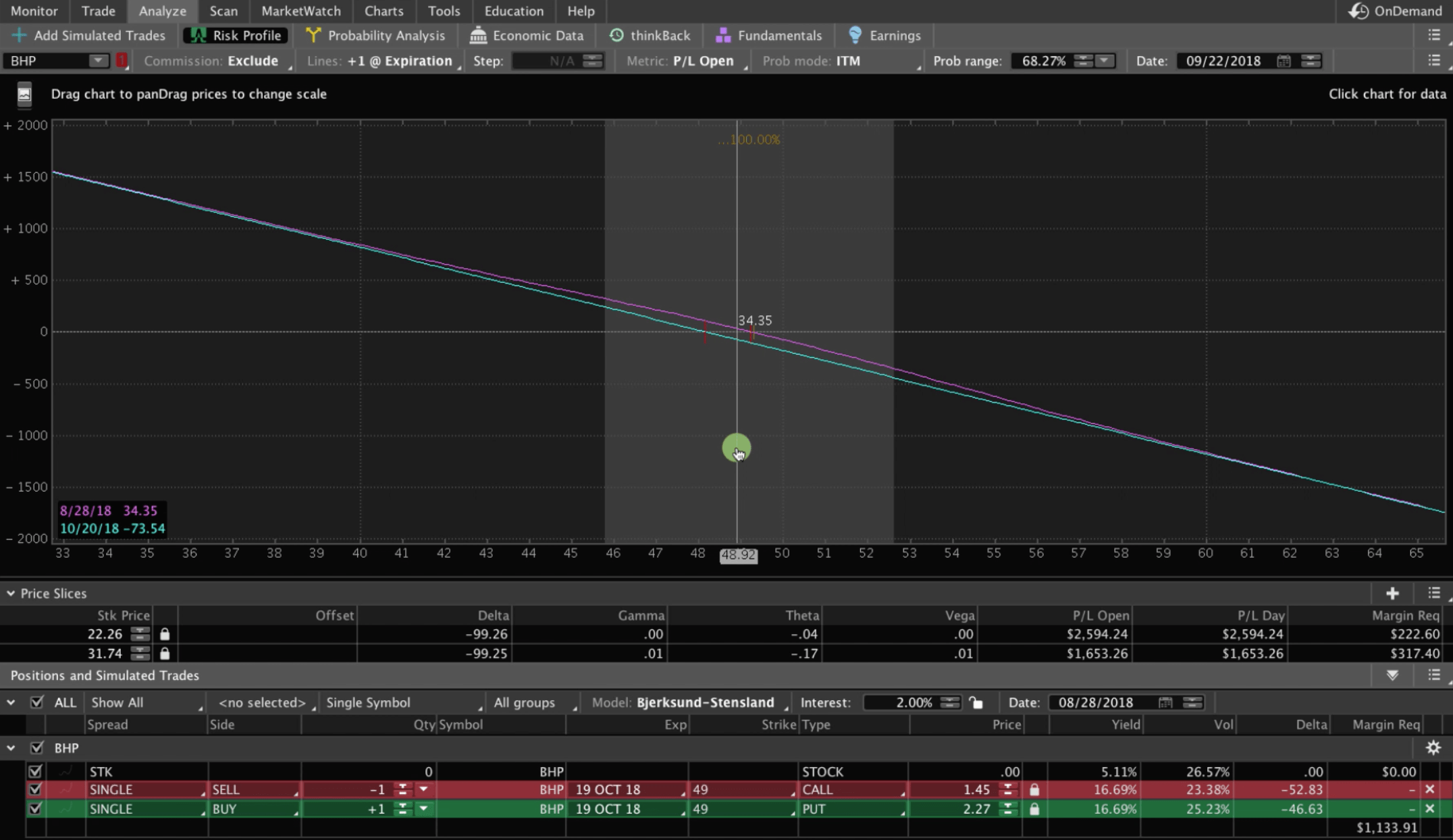
Remember, the stock market goes up and it goes down. There’s no reason to limit yourself to only long positions where you benefit if the price of the stock goes up.
You need to have these different strategies at your disposal, because there are times where you’re going to want to either hedge your overall positions using short stock, or short simulated stock using options.
I hope this was helpful in learning how to short stock using options.
See you in the next lesson!
Happy Trading!
-The NavigationTrading Team


Follow